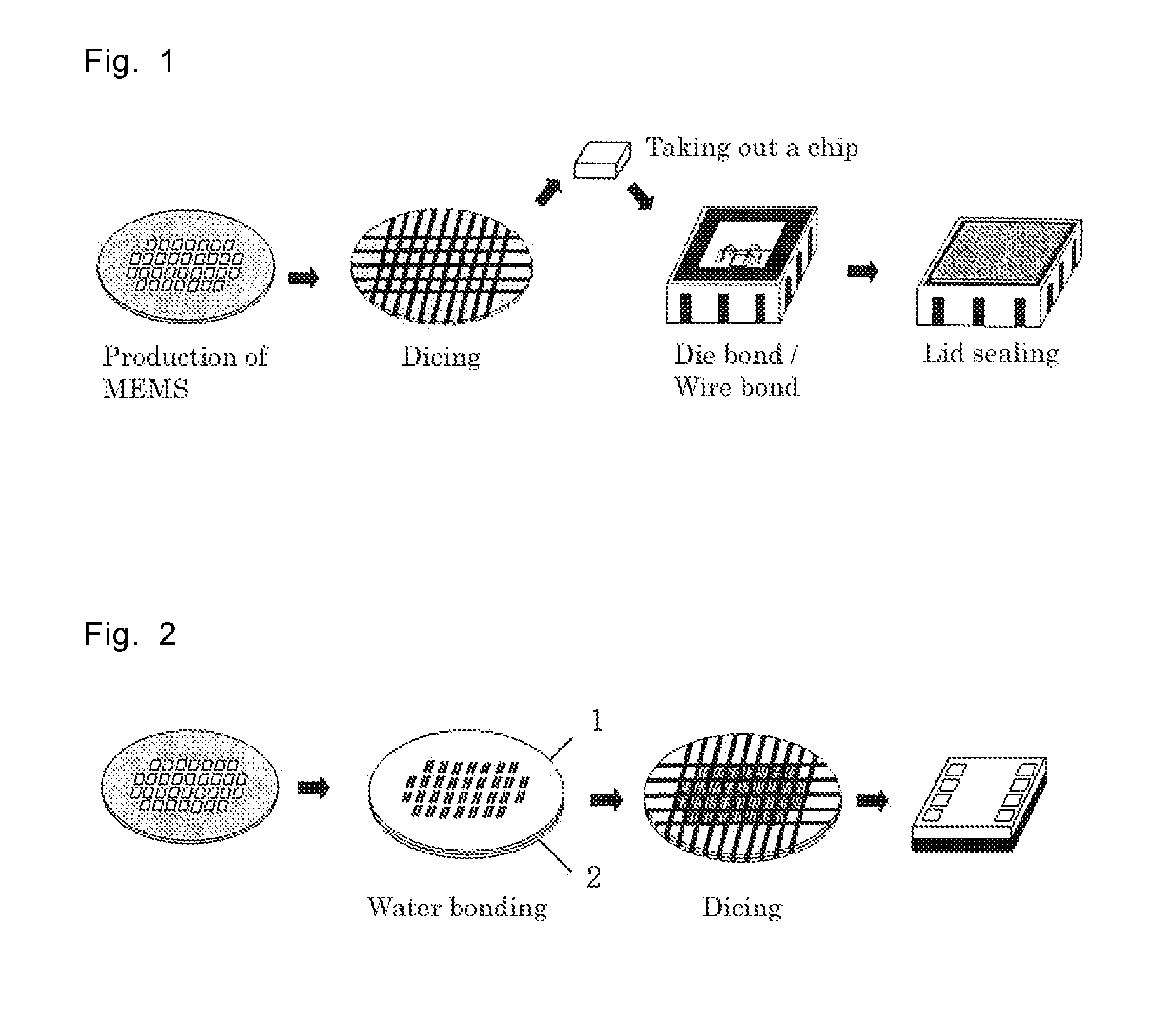Anodic bondable porcelain and composition for the porcelain
a technology of anodic bonding and porcelain, applied in the direction of natural mineral layered products, semiconductor/solid-state device details, transportation and packaging, etc., can solve the problems of reducing the size and profile of packaging, enhancing performance, and limiting the reduction of hole size and pitch, so as to reduce the influence of mems, resist cracking, and increase the transverse strength
- Summary
- Abstract
- Description
- Claims
- Application Information
AI Technical Summary
Benefits of technology
Problems solved by technology
Method used
Image
Examples
examples
[0088]Hereinafter, the present invention will be described in more detail by way of examples and comparative examples. However, the present invention is not limited thereto.
examples 1 to 9
[0089]Li2CO3, MgO, Al2O3, SiO2 and Bi2O3 with an average particle size of 1 μm or less were mixed so that a content ratio in the oxide conversion became to that as shown in Table 1, and the mixture was calcined at 750 to 850° C. and crushed to obtain powder. An organic binder, a plasticizer and toluene were added to the calcined product to form a green sheet with a thickness of 150 μm by a doctor blade method. Then, five green sheets were laminated, and thermally compressed under a pressure of 150 kg / cm2 at a temperature of 70° C. The thus-obtained laminated body was subjected to binder-removal in the air at 500° C., thereby to obtain a multi-layered substrate made of a porcelain fired in the air under the conditions as in Table 1.
[0090]Nine levels of the substrates densified (water absorption: zero) at a firing temperature of 850 to 900° C. were prepared to evaluate the anodic bonding performance. Each of the nine levels of the substrates was diced to a 20 mm square and mirror-poli...
PUM
| Property | Measurement | Unit |
|---|---|---|
| molar ratio | aaaaa | aaaaa |
| temperature | aaaaa | aaaaa |
| wt % | aaaaa | aaaaa |
Abstract
Description
Claims
Application Information
 Login to View More
Login to View More - R&D
- Intellectual Property
- Life Sciences
- Materials
- Tech Scout
- Unparalleled Data Quality
- Higher Quality Content
- 60% Fewer Hallucinations
Browse by: Latest US Patents, China's latest patents, Technical Efficacy Thesaurus, Application Domain, Technology Topic, Popular Technical Reports.
© 2025 PatSnap. All rights reserved.Legal|Privacy policy|Modern Slavery Act Transparency Statement|Sitemap|About US| Contact US: help@patsnap.com


